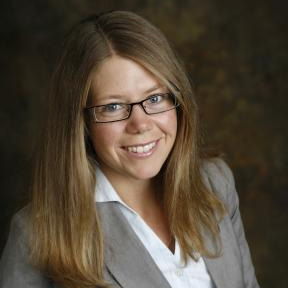The Bench and Bar's Responsibility in the Development of Entry-Level Lawyers
One of my primary responsibilities as Counsel to the Chief Justice of the Colorado Supreme Court is to start and maintain dialogue among Colorado's law schools, bench, and bar in an effort to find and promote commonality among their efforts to improve our state's legal profession. Naturally, then, I was interested in attending the 2013 Educating Tomorrow's Lawyers conference, which sought to connect the legal academy and members of the legal profession for two days of ideas and discourse about how law students learn to become lawyers during law school and how that learning connects with their development as new lawyers when they begin to practice. And so, earlier this month, I joined the ETL fellows, representatives from ETL consortium law schools and other law schools, along with judges and lawyers of all kinds, in Denver for ETL's second annual conference, titled “Connecting the Academy and the Profession.”
One theme that emerged during the conference is that it is imperative that the bench and bar take responsibility to be involved—right alongside the law schools—in the development of entry-level lawyers. During the deans' panel, there was consensus that the structural changes happening in the legal industry have created a new reluctance among legal employers to hire entry-level lawyers, thus driving the need for experiential learning and legal skills training to make entry-level lawyers employable. Indeed, law schools are evolving to meet this growing need by, among other things, integrating the recommendations of the Carnegie report into their courses and curriculum and expanding the number of clinics and simulation courses being offered to law students. However, it is unfair and unrealistic to expect law schools to be able to meet the need for experiential learning and legal skills training all on their own.
Organizationally, state judiciaries and bar associations are well-positioned to collaborate with law schools to develop projects and programs specifically targeted to the needs of their legal communities. For example, a state's judiciary, through its attorney regulation counsel, could readily compile and analyze attorney complaint and misconduct data to determine whether there are trends in the types of trouble that the state's entry-level lawyers are getting into. That information could be shared with the state's bar association and law schools for development of law school and/or continuing legal education curriculum aimed at stemming the trends.
Similarly, a state's bar-run mentoring program could partner with the mentoring programs at the state's law schools to bridge their curriculum—and possibly even their mentoring relationships—to emphasize a set of agreed-upon social and character core competencies such as passion and engagement, stress management, and client focus and service. While law schools generally do a good job of bringing judges and lawyers into the law school for adjunct teaching, panel discussions, and other types of presentations, the bench and bar could do more as a whole to invite the law students in their state to begin to see themselves as part of the local legal community. One idea could be for a state's judiciary or bar association to coordinate opportunities—which could be listed on a master calendar housed on the judiciary or bar association website—for law students to observe various types of proceedings occurring in the state's trial and appellate courtrooms. The judges and lawyers could agree to meet with the law students afterwards to answer questions about the proceeding.
Separate and apart from the need for experiential learning and legal skills training to overcome the impact current economic pressures have placed on legal employers' hiring decisions, there was an abundance of research presented at the conference demonstrating that a lawyer's professional development extends beyond law school and through the first many years practice. One metric suggests that in addition to teaching critical thinking, judgment, and communications skills, professional development must advance an internalization of values and virtues, an orientation toward clients and service, and an ability to work with others.
At a time when judges and lawyers lament myriad ways the legal profession has been co-opted—if not corrupted—by the business of law, the need for greater collaboration in providing experiential learning and legal skills training to law students and entry-level lawyers affords an opportunity to the bench and bar to regain control of defining what it means to be a lawyer. Of course, bubbling underneath all this are concerns about the cost and value of a legal education, especially in a legal market in which not every graduate is guaranteed a legal job and conventional wisdom spins a narrative—which is promisingly beginning to be empirically debunked—that lawyers are generally dissatisfied with their careers. Despite any foreboding uncertainty about the current state of the legal industry, the legal profession, and legal education, I left the conference feeling positive, optimistic, and energized. Perhaps it was because ETL, by bringing together members of the academy and the profession for this conference, showed me that the future is ours to write and that the hard work of beginning it is already underway.


